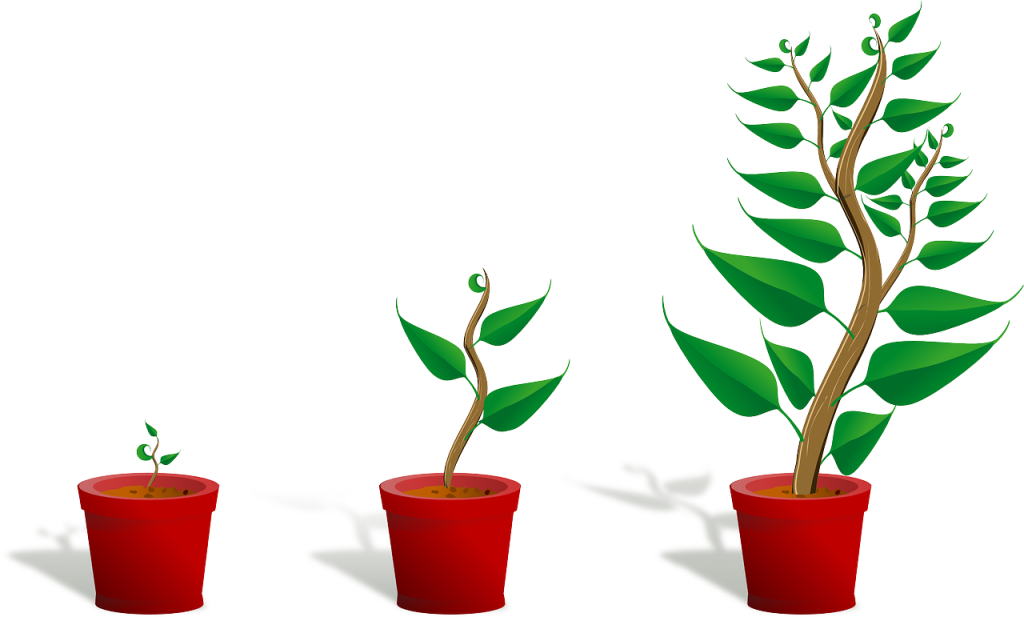In the bustling world of gardening, the union of flora and their vessels is an art form.
The inaugural chapter of “Pots and Planters: Matching Your Greenery with the Perfect Vessel” delves into this intricate dance.
Here, we illuminate the symbiotic relationship between plants and their homes, revealing how a thoughtfully chosen pot not only serves as a cornerstone for robust growth but also as a canvas that enhances the aesthetic appeal of your green sanctuary.
We’ll traverse the significance of understanding the unique requirements of your plants, and how selecting the correct pot or planter can make all the difference.
By aligning the functional needs with an expressive style, you will be equipped to create a harmonious space that celebrates the natural beauty of your plants, ensuring they thrive and transform your space into a verdant haven.
Understanding Plant Needs
As you venture further into the world of greenery, understanding the diverse needs of your plants becomes paramount.
Each species is a unique tapestry woven with specific requirements for sunlight, water, and nutrients, which are significantly influenced by the vessel you choose.
In this section, we delve into the essence of plant care—unravelling the mysteries of drainage needs, soil depth preferences, and moisture retention qualities that are crucial for plant health.
Imagine roots seeking room to grow or the delicate balance of moisture that plants like cacti or ferns demand; these details are the compass guiding you to the perfect pot.
We’ll explore how the functionality of a pot impacts root health and what this means for your leafy companions.
This knowledge is a gardener’s tool, empowering you to select pots that are more than just containers—they become life-support systems that cater to the unique language of each plant’s needs.
Materials and Types of Pots
· Terracotta: Terracotta’s porous nature allows for air and moisture to circulate through the soil, reducing the risk of root rot and fostering a healthy root system.
However, these pots can be heavy and may dry out quickly in hot weather.
· Plastic: Plastic pots are a popular choice due to their lightweight design and moisture retention, ideal for thirsty plants and easy mobility.
They are also resistant to weather-related wear, making them a durable option for both indoor and outdoor settings.
· Ceramic: Ceramic pots provide a balance of aesthetics and functionality. With a variety of glazes and finishes, they can be a stylish addition to any décor.
They tend to retain moisture better than terracotta but require proper drainage to prevent waterlogging.
· Metal: Metal pots offer a contemporary look and are often used in modern garden designs.
They’re sturdy and long-lasting but can conduct heat, potentially harming roots in direct sunlight.
· Wood: Wooden planters offer excellent insulation from heat and cold and can bring a rustic or naturalistic element to your garden.
They require treatment to prevent rot and may not be as long-lasting as other materials.
Types of Planters
· Self-Watering Planters: Self-watering planters are designed for busy gardeners, with a built-in reservoir that ensures plants receive the necessary hydration even when you’re away.
· Hanging Baskets: Hanging baskets add a vertical element to your space, allowing for a cascade of greenery from above. They are perfect for trailing plants and can make a dramatic impact in small spaces.
· Window Boxes: Window boxes are excellent for herbs and flowers, providing a splash of colour and nature right outside your window. They’re great for those with limited space who still want to indulge in a bit of gardening.
· Raised Beds: Raised beds are an ideal choice for vegetable gardening, providing easy access, excellent drainage, and a barrier against pests. They can also help prevent back strain and allow for longer growing seasons.
Each pot and planter type offers unique benefits and challenges, and the right choice depends on the specific needs of your plants and the aesthetic you wish to achieve.
Size and Shape Considerations
In the selection of pots, size truly matters. A pot too small can stunt growth and strangle roots, while one overly large may drown them in soil, leading to root rot.
This section is your guide to deciphering the delicate balance of size and shape for your plants.
It’s crucial to consider not just the current size of your plant, but its growth potential. A snug fit is ideal for those that prefer a cosy root environment, whereas fast growers will need room to expand.
Shape plays a pivotal role too. Deep pots suit long-rooted plants, whereas shallow, wide vessels are perfect for plants that spread horizontally.
We’ll provide clear, actionable advice to match each plant type with its ideal pot geometry.
By understanding these nuances, your greenery will not only survive but thrive, as the right size and shape of a pot are fundamental to providing your plants with a solid foundation for robust health and vibrant growth.
Aesthetic Matching
When it comes to marrying greenery with pottery, aesthetic harmony is key.
A well-chosen pot complements your plant’s features and ties them to your living space’s style.
Whether your home whispers minimalistic chic or echoes a bohemian rhapsody, the pot you select can accentuate both the plant’s beauty and your decor.
We’ll guide you through a palette of pot colours and finishes that can highlight the lush greens of foliage or the vibrant colours of flowers.
Textural contrasts can also be a subtle yet powerful element, adding depth and interest.
Let’s discover how to create a visual dialogue between your plants and their vessels, making your space a testament to your personal taste.
Functional Aspects
Choosing the right pot is as much about function as it is about form. Here are key considerations:
· Consider the weight of the pot when filled with soil and plants, especially if you plan to move it around. Options with built-in wheels or lightweight materials can offer greater mobility for rearranging your space or bringing plants indoors during adverse weather.
· Select materials suited for the environment in which they will be placed. Outdoor pots should withstand the elements, while indoor pots can be more decorative and delicate.
· For outdoor planters, take into account exposure to sun, wind, and rain. Choose sturdy and durable pots for high-exposure areas and those with protective finishes or insulation for sensitive plants.
· Ensure pots have adequate drainage holes to prevent water from pooling at the bottom. If excess drainage is a concern, especially indoors, look for pots with saucers or consider double-potting.
· Utilize pots that make the most of your available space. Vertical planters, hanging pots, or wall-mounted options can maximize small areas.
· Accommodate the root growth pattern of your plant—some prefer deep pots for vertical growth, while others spread out and require wider pots.
· Some materials may require more maintenance, such as regular sealing or rust protection. Consider how much time you are willing to invest in pot maintenance.
By taking these functional aspects into account, you can ensure that your pot selection is not only visually pleasing but also caters to the practical needs of your plants and living space.
Maintenance and Care
The longevity of pots and the vibrancy of plants both hinge on proper maintenance.
This section will outline the essentials of pot care. For terracotta and wood, periodic sealing preserves integrity.
Plastic and metal may need seasonal cleaning to maintain appearance and prevent damage.
Winterizing your pots is critical in colder climates, ensuring they don’t crack or flake.
When roots peek out of the drainage hole, it’s time for a larger home; we’ll guide you through the repotting process to keep your plants flourishing.
Regular attention to these details ensures a healthy, beautiful home for your greenery year after year.
Conclusion
The symbiotic relationship between pots and plants is an intricate dance of aesthetics and functionality.
Through careful selection and pairing, you can create a thriving garden that reflects your personal style and caters to the health of your plants.
Whether you’re a seasoned gardener or a budding green thumb, understanding the critical role of the right vessel can transform your approach to plant care.
Embrace the variety of materials, sizes, and designs available, and remember that the perfect pot not only complements your plant but also becomes an integral part of your living space’s ambiance.
Happy planting!


